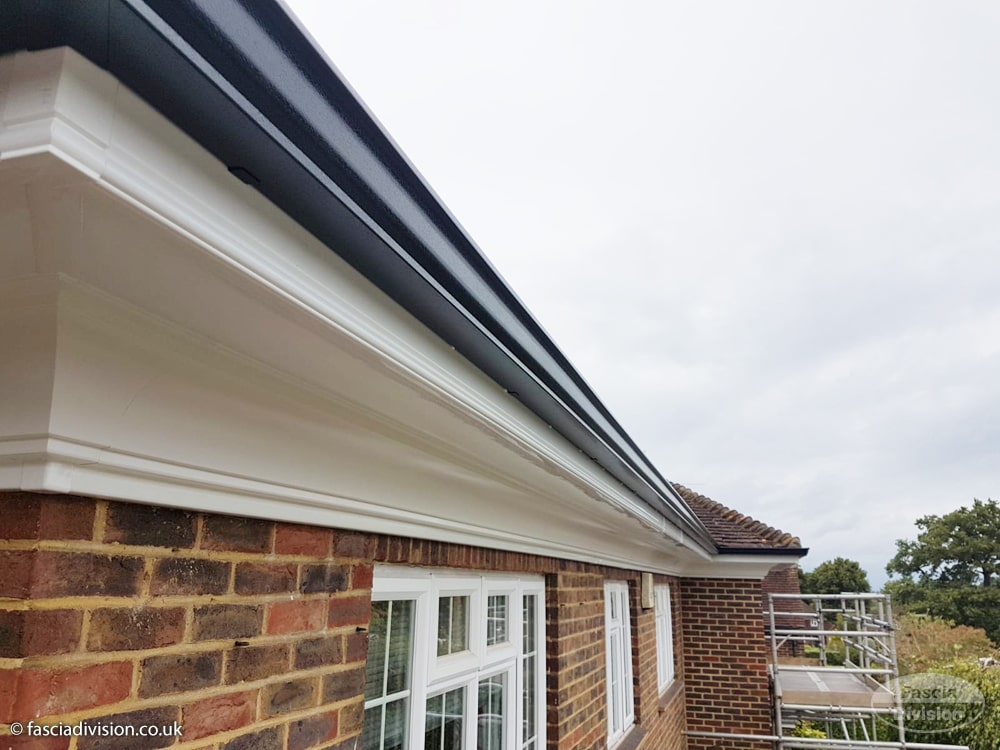
Roofline Repairs
Add a review FollowOverview
-
Founded Date August 10, 1948
-
Sectors Gesundheit, Pflege
-
Posted Jobs 0
-
Viewed 21
Company Description
Upvc Soffit Techniques To Simplify Your Everyday Lifethe Only Upvc Soffit Trick That Everybody Should Be Able To
Understanding UPVC Soffit: A Comprehensive Guide
Intro
The world of home building and remodelling is filled with myriad choices, and one such choice that homeowners often face is relating to products for soffits. Amongst the different options available, Unplasticized Polyvinyl Chloride (UPVC) has emerged as a popular option. This post explores what UPVC soffit is, its advantages, installation ideas, maintenance, and more, supplying a well-rounded understanding for those considering this alternative.
What is UPVC Soffit?
Soffit is the overhanging section of a roofing system that sits below the eaves. It is essential in supporting the roof while improving the property’s aesthetic appeal. Generally, soffits were made from timber, however with the introduction of UPVC, homeowners now have a more durable and low-maintenance alternative. UPVC soffits are weatherproof, resistant to rot, and offer superior thermal insulation.
Secret Characteristics of UPVC Soffit
- Durability: UPVC products are resistant to the elements and do not warp or weaken like wood.
- Low Maintenance: Unlike wooden soffits that require routine painting and dealing with, UPVC soffits are simple to clean and preserve.
- Adaptability: Available in different styles and colors, UPVC soffits can complement any architectural style.
- Insulation: UPVC provides exceptional thermal insulation residential or commercial properties, helping in energy preservation.
Benefits of UPVC Soffit
In picking UPVC soffits, homeowners unlock many benefits:
-
Weather Resistance: UPVC soffits can withstand severe climate condition– be it rain, snow, or sun– without damage.
-
Fire Resistance: UPVC is non-combustible, making it a safer option for many house owners.
-
Cost-Effectiveness: Although the initial financial investment might be greater than traditional materials, the durability and decreased maintenance expenses typically make UPVC the more cost-effective alternative gradually.
-
Enhanced Aesthetics: UPVC soffits are available in various finishes, allowing house owners to select styles that enhance their home’s look.
Table 1: Comparison of Soffit Materials
| Product | Durability | Maintenance | Expense | Visual Options |
|---|---|---|---|---|
| UPVC | Extremely High | Low | Moderate | High (different designs) |
| Wood | Moderate | High | Low-Medium | Moderate (restricted colors) |
| Aluminium | High | Moderate | Medium-High | High (diverse finishes) |
| Vinyl | High | Low | Moderate | Moderate (some customized alternatives) |
Installation of UPVC Soffit
The installation of UPVC soffit can seem overwhelming, but simplifying into manageable actions can simplify the process. It is recommended to engage specialists for a smooth installation, however property owners with DIY skills can follow these steps.
Actions for Installing UPVC Soffit
-
Step the Area: Use a tape procedure to figure out the lengths and areas where the soffit will be set up.
-
Select Materials: Choose UPVC soffit boards in the preferred colors and designs, together with any required accessories like nails and brackets.
-
Prepare the Surface: Clean and prepare the area to ensure optimum adhesion and fit.
-
Cut UPVC Boards: Use a saw to cut UPVC boards to the needed lengths based upon your measurements.
-
Set Up Soffit Boards: Begin attaching the boards from one end, ensuring they are level and flush.
-
Finish Edges: Use finishing boards to cover exposed edges for a tidy appearance.
Table 2: Essential Tools for UPVC Soffit Installation
| Tool | Purpose |
|---|---|
| Measuring tape | For measurements |
| Saw | To cut UPVC boards |
| Level | To ensure boards are straight |
| Drill | For attaching screws/nails |
| Safety Equipment | To secure while installing |
Maintenance of UPVC Soffit
One of the most considerable benefits of UPVC soffit is its low maintenance requirement. However, with any product, some care is still necessary to prolong its lifespan.
Tips for Maintaining UPVC Soffit
- Regular Cleaning: Use a soft brush or fabric in addition to warm soapy water to clean up the soffits.
- Examine for Damage: Periodically inspect for fractures, spots, or other damages, particularly after serious weather condition.
- Seal Joints: Ensure all joints remain sealed to avoid leaks and water ingress.
- Avoid Harsh Chemicals: Do not use abrasive cleaners as these can harm the surface of the UPVC.
Frequently Asked Questions (FAQs)
Q1: Can UPVC soffit be painted?
A1: While it is technically possible to paint UPVC soffits, it is not recommended as the paint might not adhere well and might peel gradually. UPVC is available in numerous colors, removing the requirement for painting.
Q2: How long does UPVC soffit last?
A2: UPVC soffit can last over 20-30 years when appropriately preserved. Its resistance to rot and decay substantially adds to its durability.
Q3: Are UPVC soffits eco-friendly?
A3: UPVC is recyclable, making it a more environmentally friendly choice in contrast to lots of standard materials. Nevertheless, the production procedure has a carbon footprint, so consideration of one’s environmental effect is important.
Q4: Is it needed to aerate UPVC soffits?

A4: Yes, proper ventilation is crucial for preventing wetness accumulation in the attic, which can lead to mold and decay. Lots of UPVC soffit alternatives feature integrated ventilation functions.
Picking UPVC soffit can significantly improve a home’s look while supplying long-term sturdiness and low maintenance. With the different benefits of this product, consisting of weather resistance, fire security, and cost-effectiveness, homeowners are encouraged to consider it for their renovation or building tasks. By understanding the installation, maintenance, and benefits of UPVC soffits, individuals can make educated choices that secure their home financial investments while enhancing their living spaces.

